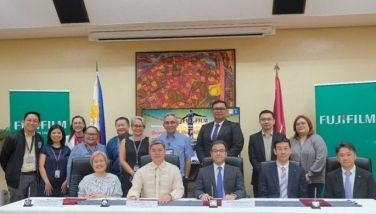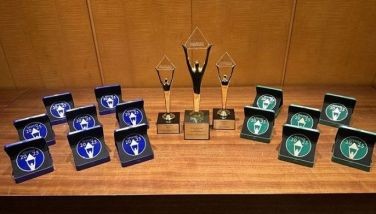Ganito kami noon…

The spring chickens in government should listen occasionally to their elders to grasp the slow pace of progress in this country.
Many years ago there was a local movie set in the Spanish period, titled Ganito Kami Noon, Paano Kayo Ngayon? (The makers’ translation: “This is how we were, how are you doing now?â€) Directed by Eddie Romero and starring Miss Universe Gloria Diaz and Christopher de Leon, the movie won awards, and the question has often been asked in the context of Philippine progress.
Here is one aspect of the answer, as related by a woman who keeps sighing that at 76 she has grown tired of dealing with the woes in her chosen field, tourism:
* * *
Alejandra “Dading†Clemente finds it ironic that Hong Kong has suspended the visa-free privilege of Philippine public officials and diplomats.
Clemente relates that until four decades ago, many Hong Kong residents, second-class citizens in their own land, could not travel overseas except under special circumstances, because they had only “certificates of identity†instead of regular passports.
This changed in 1973, Clemente recalls, when Ferdinand Marcos and his tourism minister, “Sunshine Joe†Aspiras, decided to ease travel restrictions for Hong Kong people and accept the certificates as valid travel documents. Other governments soon followed Manila’s lead; at the time, the Philippines was still seen as a leader in many things.
Clemente, founder of Rajah Tours, processed the first batch of around 30 Hong Kong visitors. By the end of the year, Clemente said, nearly half a million Hong Kong certificate holders had visited the Philippines, taking the seven-day tour package costing $400, all in. The exchange rate at the time, she said, was about P7 to $1.
The flights from Hong Kong were on Philippine Airlines, at the time flying high as Asia’s first international airline.
In 1973, Singapore’s Changi International Airport was still germinating in the mind of its autocratic founding father Lee Kuan Yew as air traffic soared in the city-state’s old airport.
And in South Korea, in 1973 not yet fully recovered from the war, groundbreaking for Incheon International, Changi’s rival as the world’s best airport, was still two decades away.
Back in 1973, we also had an international airport that badly needed modernization. Clemente recalls the civil aviation chief at the time, Federico Ablan, burning down the Manila airport, whose main building was on the site of the current domestic terminal. So Rajah Tours had to bus arriving Hong Kong tourists from the tarmac to a building called Miramar across the street from the airport to take them to their hotels.
Accommodations in Manila, circa 1973, were acutely limited. Clemente could offer travelers only four choices: the Manila Hilton (now the Manila Pavilion in Ermita), Bayview on Roxas Boulevard across the US embassy, the original Hyatt (now the Midas Hotel) also on Roxas Boulevard in Pasay, and the InterContinental in the Manila suburb of Makati.
Sometime in 1974, Clemente says the Philippines also became the first country to lift post-war travel restrictions on the Japanese. As the number of foreign visitors surged, Clemente added to her list of accommodations Hotel Enrico on San Marcelino Street in Manila, a hotel in the cogon land of BF Homes subdivision in Parañaque (burned down many years ago), plus a hotel in Antipolo, Laguna near the waterfalls.
The double-deck sightseeing tour bus called “Motorco†was still around. Later during the martial law regime, the air-conditioned “Love Bus†began plying the streets of Manila and its suburbs.
Within 12 months between 1970 and 1971, about 187,000 foreigners visited the country. This jumped to 1.2 million in 1974-1975, Clemente said. Rajah Tours added a two-night stay at the Pines Hotel in Baguio City to the Hong Kong tourists’ package, for an additional $25, all in.
Sunshine Joe launched travel marketing blitzes in Europe, and the private sector built more hotels to accommodate the increase in visitors.
Construction intensified in preparation for Manila’s hosting of the annual meeting of the International Monetary Fund and World Bank in 1976. The Marcos regime built the Philippine International Convention Center (PICC), Asia’s first, which served as the venue for the September meeting.
Alongside construction of the PICC, the private sector built the Century Park Sheraton, Dusit, Holiday Inn, Mandarin, Peninsula Manila, Silahis International, Traders, and Westin Philippine Plaza hotels. A renovated and expanded Manila Hotel also opened its doors to the IMF-World Bank delegates.
* * *
A frequent visitor to the Philippines in the past decades has remarked to me how so few hotels were added to that list since 1976.
It can also be depressing to consider how our tourist arrivals improved from P1.2 million way back in 1974 – forty years ago – to just four million last year.
As for the Manila airport, now the Ninoy Aquino International Airport, just compare it with Changi, Incheon, and the airports of Thailand and Malaysia (and Hong Kong), and weep.
Baguio, the City of Pines, has lost its pines and can collapse any time from the weight of informal settlements.
Some countries move faster than others. In 1957 at the end of the Korean War, South Korea’s per capita GDP was lower than Ghana. By 2010, South Korea ranked 13th in the world in terms of per capita GDP while Ghana languished at 86th.
What are others doing right? Many experts have offered answers, and while Philippine policy makers agree that at least some of the ideas should prove good for the nation, we always have a problem in implementation.
Ask old-timers what they think of how the nation has changed in their lifetime and you get a common answer: there have been improvements, but considering where we came from, things could have been much better.
- Latest
- Trending




























